World renowned British artist Banksy is thought to have created seven new street-artworks as stencil-murals appear in the war-ravaged towns of Ukraine. Artworks that are in keeping with Banksy’s aesthetic and mastery of subversive juxtaposition have surfaced in the capital Kyiv, as well as in Irpin and Borodyanka, towns which have suffered greatly from continuous Russian attacks. In May we reported on Australian artists Hellen Rose and George Gittoes who were in Ukraine, also visiting Borodyanka amid atrocity.
Banksy is a very famous artist who remarkably remains anonymous, and is celebrated for public street art that could be described as activist, drawing on dark humour, political, and social commentary.
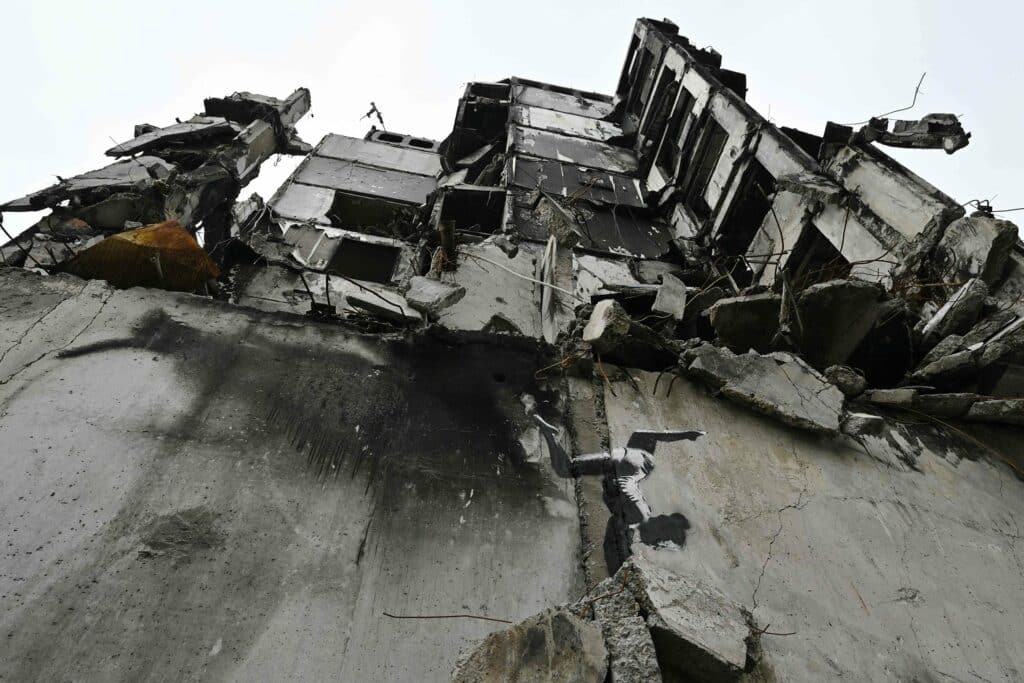
Initially, said The Art Newspaper, three artworks were sighted, leading Ukrainians and people on social media to suspect Banksy was in the country. One of the possible works by Banksy in Borodyanka shows a young boy throwing a man to the ground in a match of Judo. It has been speculated that the image may symbolise Russian president, Vladimir Putin, who is known to be a black belt judoka. The ABC have suggested that the image could too be read as ‘an allusion to the biblical story of David and Goliath.’
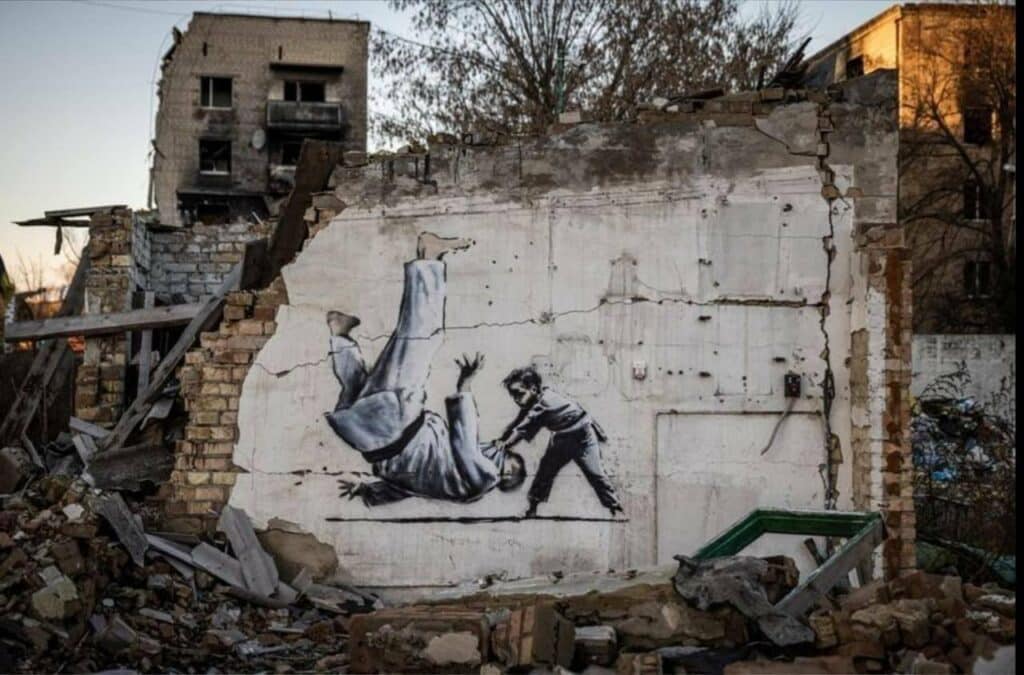
Since then Banksy posted an image to his Instagram captioned ‘Borodyanka, Ukraine’ which showed a stencil of a female gymnast doing a handstand on the rubble that has fallen from the ruins of a bombed residential building, this is thought to signify Banksy claiming the work as theirs.
The image has received more than 2million ‘likes’. ArtNet said that Banksy has confirmed a second image authored, in which the artist has added the image of a truck to an existing piece of graffiti that appears to be a penis, collectively the forms comprise what could be seen as a military truck carrying a missile.
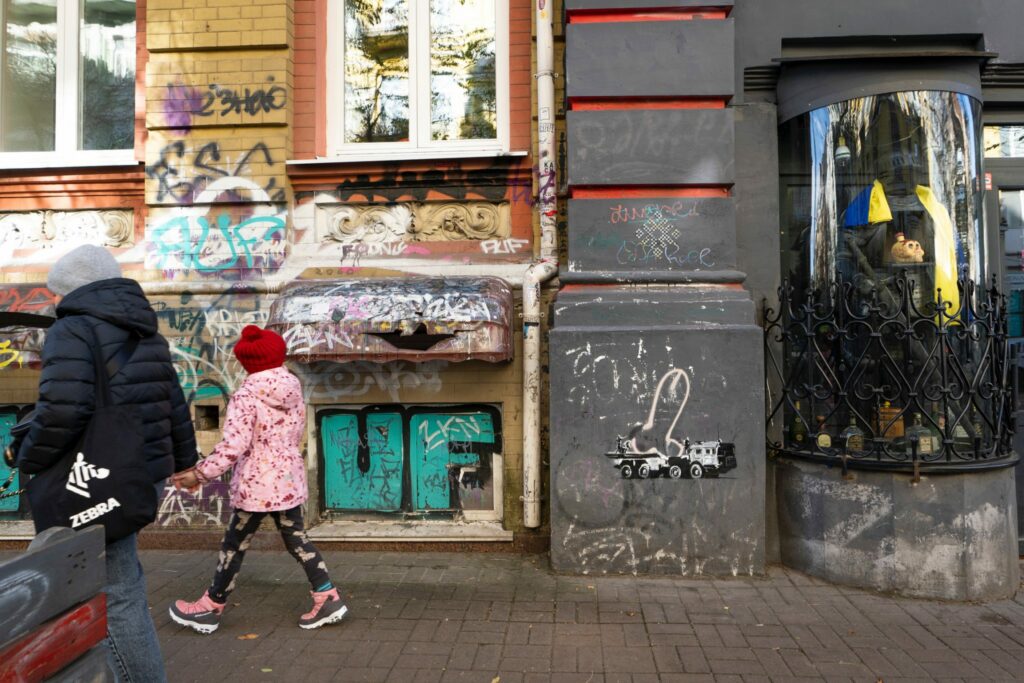
Several other artworks have appeared in Borodyanka. In Irpin Al Jazeera reported the appearance of an image of a female gymnast waving a ribbon while wearing a neck-brace, as if performing or striving for excellence despite being injured.
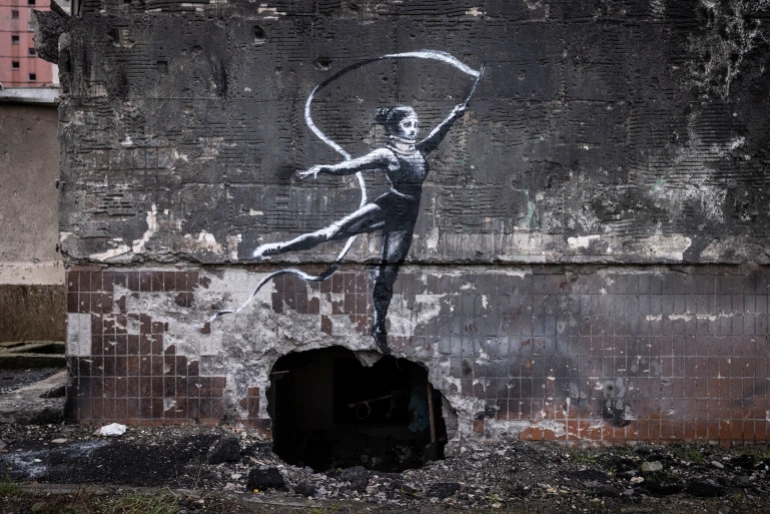
In Independence Square in Kyiv, an image of children has been painted onto a concrete defensive stack of blocks, it is juxtaposed with a metal tank trap, making it look as if the kids are playing on a see-saw. The metal tank trap has since been removed, leaving one child afloat in the air.
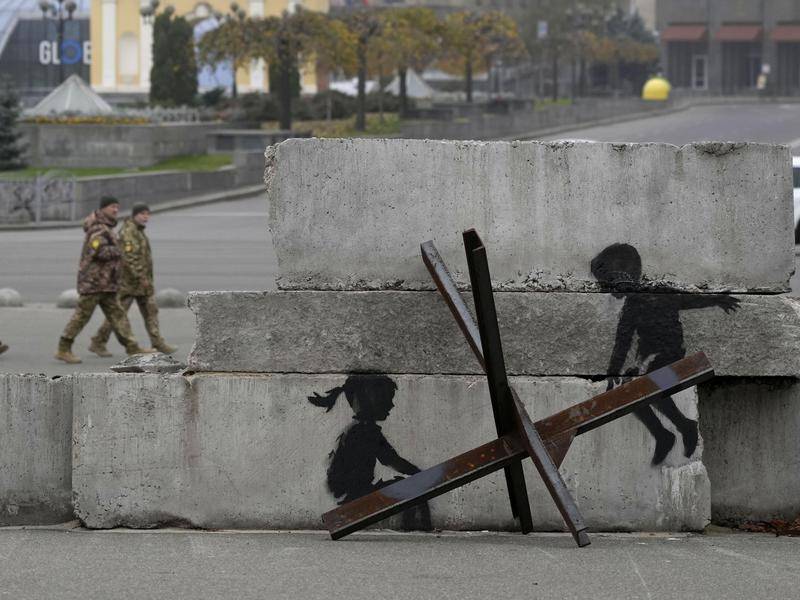
In another work painted on a yellow wall in Hostomel, of another building battered by attacks, we see a lady in a nightgown with curlers in her hair. She is wearing a gas-mask and holds a fire-extinguisher.

On a war-scarred and formerly residential building in Gorenka appears the curious image of an older man in a bubble bath washing himself.
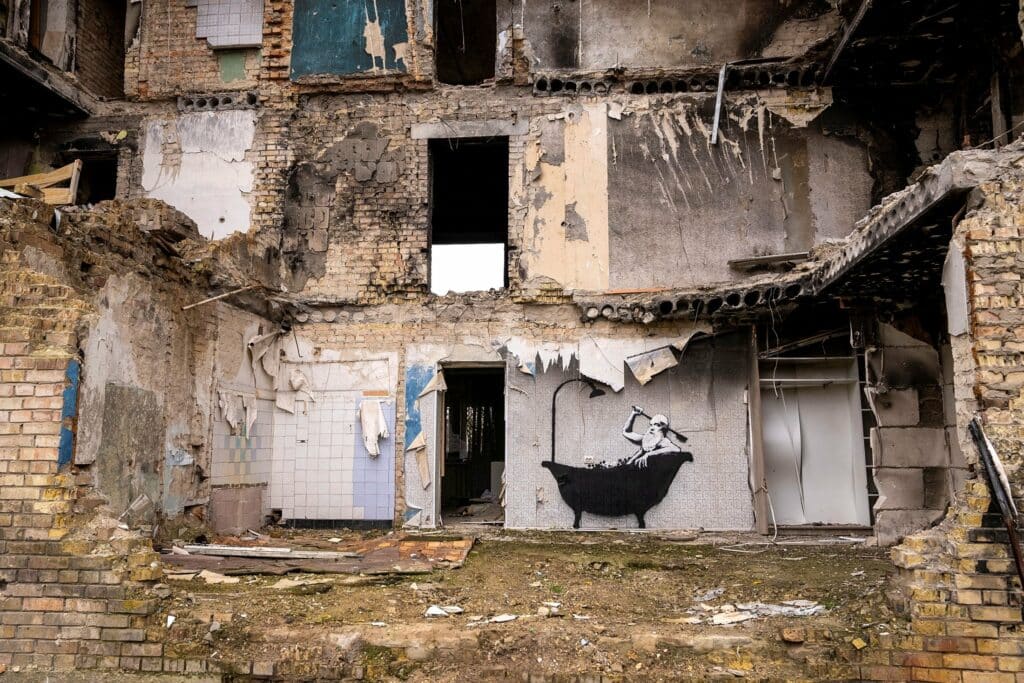
Banksy’s new artworks are jarring and thought provoking. The stencils which mostly depict civilians and children remind us of the real lives affected by war.